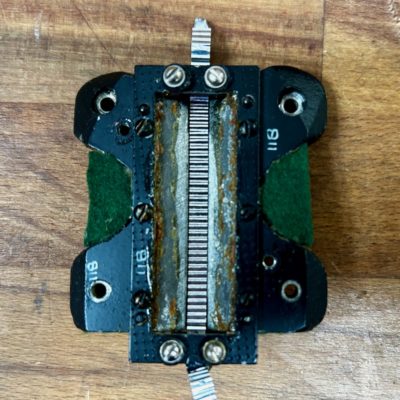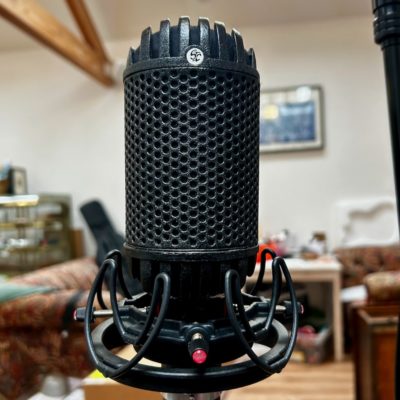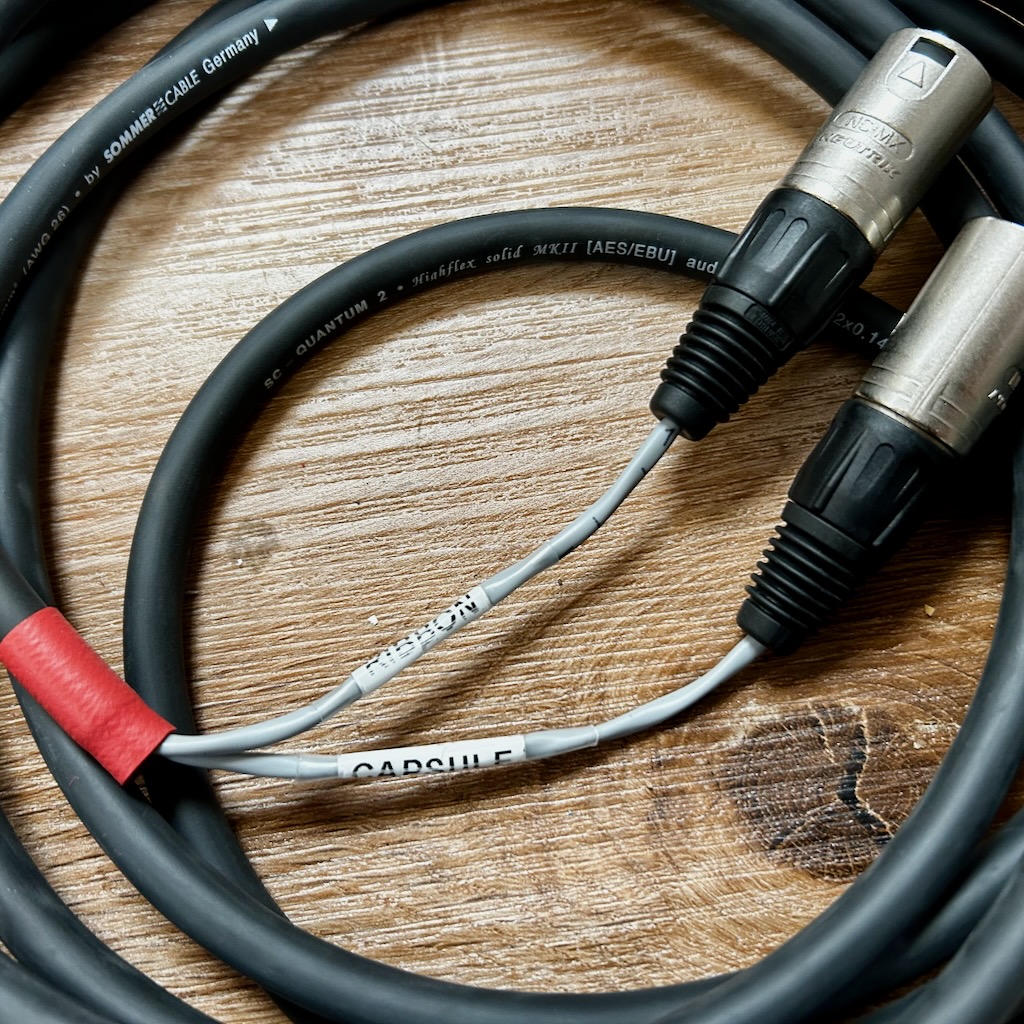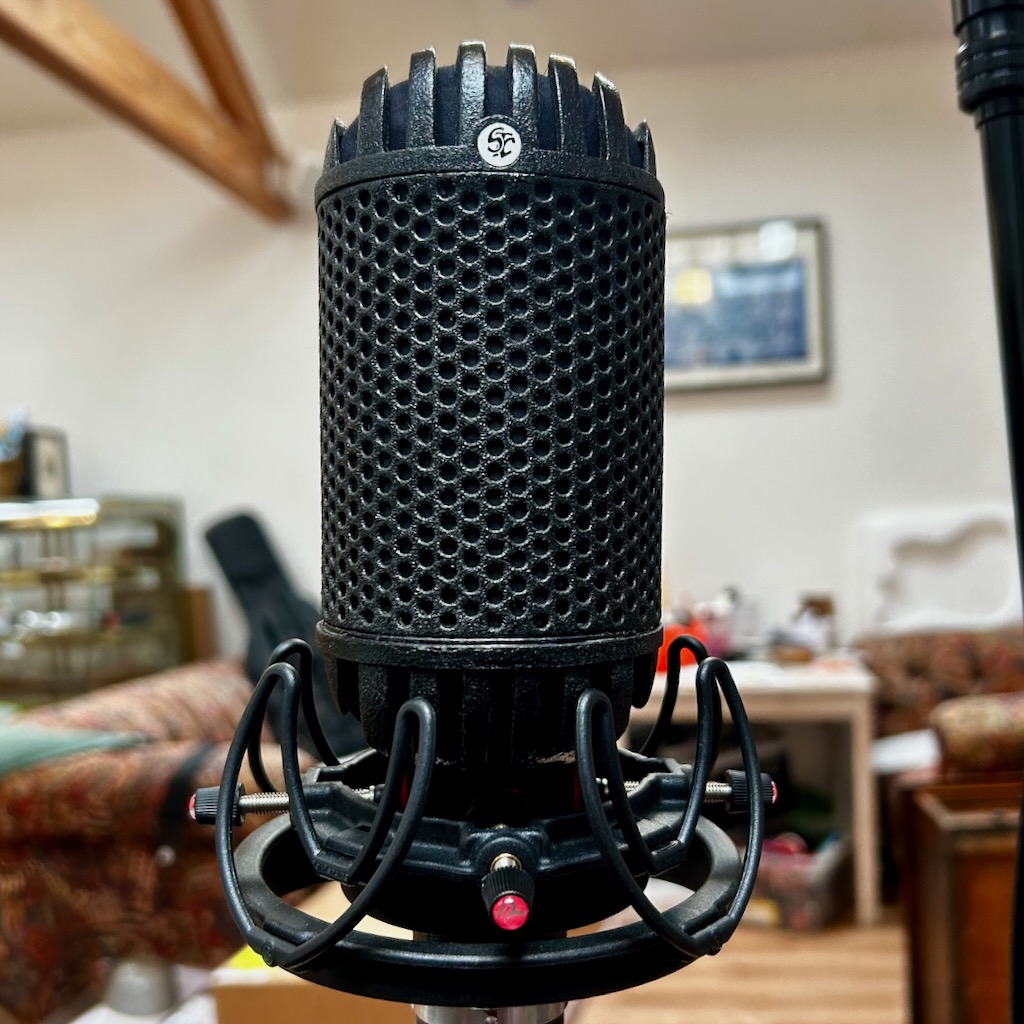STC 4033-ST upgrades

I have always loved the looks of the STC 4033A microphone, but as far as cardioid microphones go, it might be considered an evolutionary dead end. The 4033A is an example of a dual transducer mic, which was designed back in the 1930s when uni-directional (i.e. cardioid) patterns were needed for film set use, but most ribbon mics were figure-8 and most other microphones were omnidirectional. STC solved this problem by combining both of those elements. The front of the ribbon is in phase with the dynamic capsule and adds to it, whereas the rear of the ribbon is reverse phase and cancels. Add these together in the right proportions and we get a cardioid microphone.

At least that is the theory. In practice this works well enough in the mid range but veers away from cardioid at the high and low ends of the frequency range. To compensate, the 4033 has a filter network which rolls off the top end of the ribbon when combined with the capsule. A switch at the rear allows the engineer to select either the ribbon or capsule by itself, or the combined output. (BTW We recently built a few replica 4033 microphones at Extinct Audio – in this case we prioritised tone over pattern and omitted the filter network).
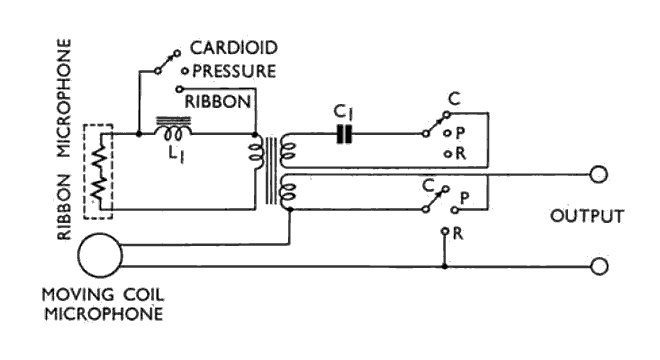
The Western Electric and Altec version of the 639 birdcage microphone, and the Western RA-1142 all used a similar approach to the 4033 , but these mics were soon superceded by other simpler cardioid dynamic and ribbon mics. The dual element cardioid mics were became obsolete curiosities, although they have developed a bit of a cult following in recent times.

I have recorded some great electric guitar sounds with a 4033, with the ribbon softening the tone, whilst the dynamic capsule can add some welcome bite at the top end. The low sensitivity and output level are well suited to louder sources and it doesn’t matter for this application if the mic has a little noise, as the amp noise will always dominate.
There are still some good working examples out there, but, as a jobbing microphone technician, I see a lot of these which are in poor shape and need a lot of work. That is not surprising after 80 years or so – I expect I’ll need a service too when I get to that age! They do tend to be a bit noisy, and they have a low impedance output, with the ribbon and dynamic elements having outputs around 25 ohms, and the combined mode is about 50 ohms. Often these are best used with a matching transformer.
Often the best way to approach a really old mic in poor condition is to do a complete rebuild, rather than trying to fix numerous small problems and then finding others. And that also gives the opportunity to make some changes, so that the microphone is more suitable for use in a modern studio setting. Common problems with 4033s are broken output pins, noisy, stretched or broken ribbons, flaky paint, erratic switches and bad capsules. Luckily the mic on my bench this week had a good capsule, and the other issues can be solved.
For this mic I decided to split the ribbon and dynamic outputs into different channels, bypassing the switch and filter section. Each channel gets its own transformer so that the outputs are both 300 ohms. The output impedances are now the same as a modern Coles 4038, and any good modern mic preamp will work nicely with a 300 ohms source. Adam at Extinct Audio re-finished the microphone for me and fitted new grill cloths, and I added a 5 pin XLR socket to carry the two outputs. Everything was re-wired and the ribbon replaced.
So now we have a modernised 4033 with two outputs, both at 300 ohms, which can be recorded onto separate channels and mixed together to taste. Each channel can be given separate equalisation or compression. I made a couple of recordings to show how this works.
Firstly, a little bit of speech to introduce the microphone and hopefully demonstrate how the two transducers sound, separately and together.
4033-ST Speaking:⬇️
And then some acoustic guitar:
4033-ST Ribbon only: ⬇️ The ribbon element is quite dark.
4033-ST Capsule only: ⬇️ You can hear that this is quite a bit brighter than the ribbon.
If we put those together and get a little creative it can sound like this:
4033-ST Ribbon and Capsule mixed:⬇️
The track above has a little bit of compression and bass cut on the ribbon element (to control my sloppy playing), and a plate type reverb on the dynamic capsule to give it a feeling of space and depth.
The result of this is that we now have a microphone with a sufficently low noise floor to recording gentle acoustic fingerpicking, and the two outputs makes it versatile and opens some creative doorways, such as blending the sounds to taste ands addding EQ, dynamics or effects. One can also pay for a stereo effect. And the ribbon motor and dynamic elements themselves remain unchanged, so the sound is very close to that of a classic 4033A. Best of both worlds? Maybe.
I like this one so much that I am keeping it, but will be offering a few for sale soon as well as upgrades as a service.
PS the guitar music is an excerpt from “Kinkachoo I Love You” by Phillip Houghton.
